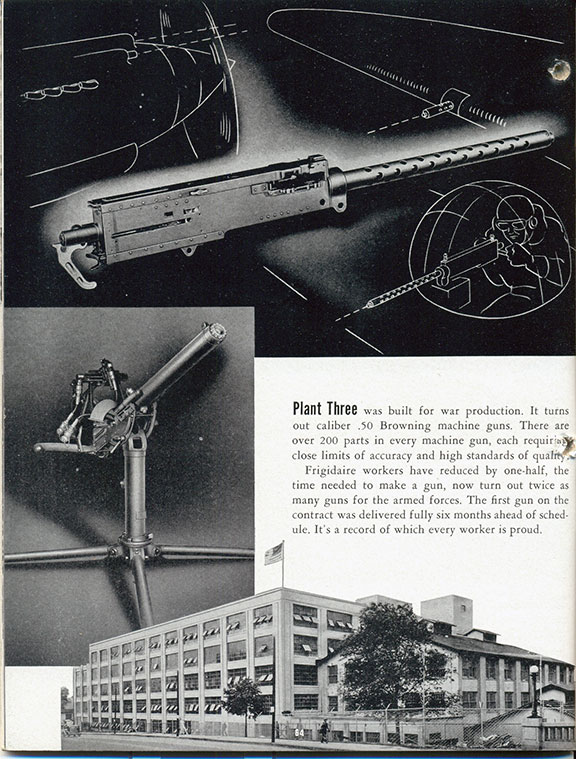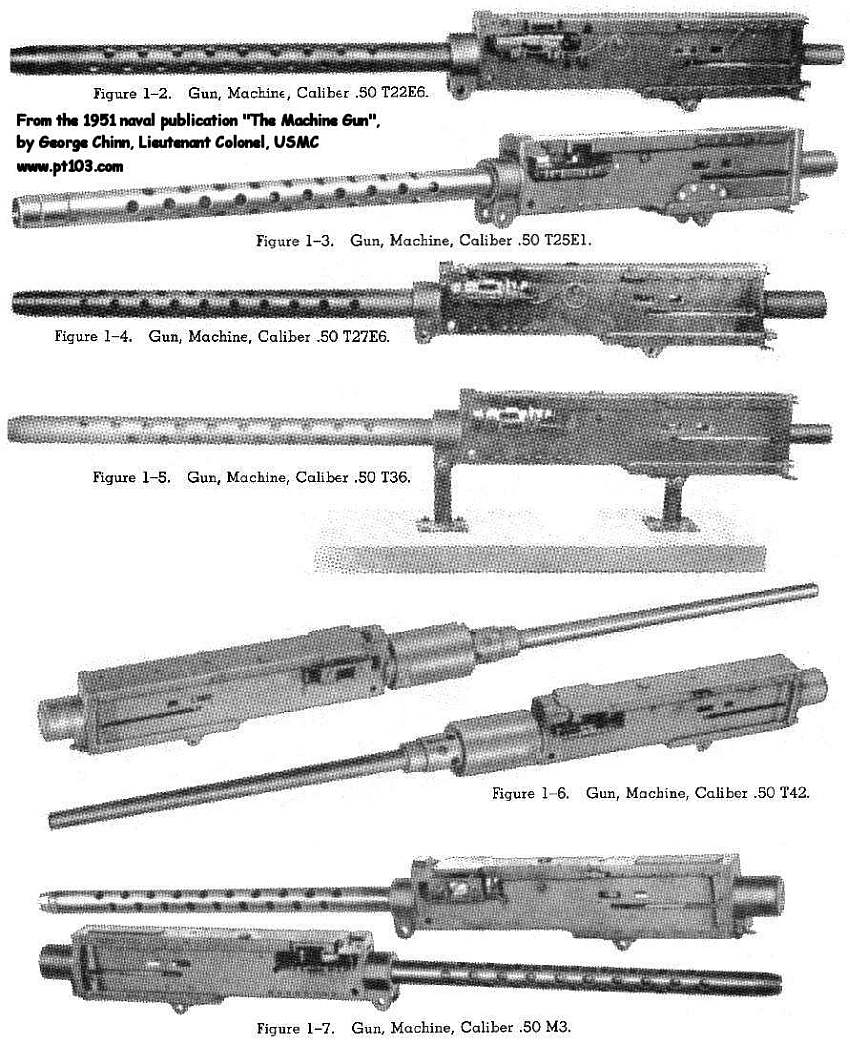During WWII, most companies had to shift production from civilian items to military production. Frigidaire was one of them; at the time it was a General Motors subsidiary and was tasked with making airplane parts and Browning .50 M2 machine guns instead of refrigerators. It produced 363,000 guns and 1 million spare barrels during its production run, later making manufacturing changes that changed the weapon into a new model. (1)
GM M2 manual, AC Spark Plugs and Frigidaire, WWII era:
 Excerpt from Frigidaire WWII new employee manual:
Excerpt from Frigidaire WWII new employee manual:

The USAAF also wanted some improvements in the firing rate of the M2, and eventually the engineers at Frigidaire modified the M2 design to increase the cyclic rate. This also changed the design so much that parts were not compatible with the older models, and the new design was renamed the M3. However, very few of these went into action-- only 2400 of them being produced by September of 1945. (2)
Aircraft .50 M2 view:
 .50 caliber M2 specifications:
.50 caliber M2 specifications:

From a Small Arms Review article--
"The very first .50 caliber machine guns designed for aircraft applications had a cyclic rate of approximately 600 rounds per minute. Continued research and development efforts by Colt and Springfield Armory had successfully increased the Browning’s cyclic rate to as high as 850 rounds per minute during the war. Still, the U.S. Air Corps wanted a gun with a minimum cyclic rate of 1,000 rounds per minute. The ever increasing speed of new enemy aircraft, and the introduction of the jet powered German Messerschmitt Me 262 Schwalbe in 1944 with a maximum speed of 540 miles per hour, greatly reduced attendant “on target” time and necessitated a faster cyclic rate for aircraft machine guns...
The Frigidaire Division of General Motors had also participated in the quest to design a suitable high-speed .50 caliber aircraft weapon. The company first tried modifying the standard M2 aircraft basic gun by designing an air buffer and a redesigned back plate buffer that was slightly longer than that of the standard model. Neither device was successful in achieving the desired result.
Due in part to the lack of progress at the High Standard plant, the Ordnance Department entered into a formal contract with Frigidaire during August of 1943, to develop a high-speed .50 caliber machine gun. This time however, the Ordnance Department specified that there would be no restrictions made upon the number of changes necessary to successfully develop the weapon. The Ordnance Department realized that a high-speed .50 caliber machine gun would have to be designed differently than the existing M2 model...
Frigidaire’s next prototype gun was designated as the T25E2 model. The T25E2 gun was designed by taking the best features of all the previous High Standard and Frigidaire prototype guns and implementing them into the new gun. The T25E2 was initially tested in June of 1944. Functioning problems were immediately experienced and the testing was stopped after only 1,800 rounds had been fired. By making numerous changes and incorporating features from the High Standard T22E6 prototype model, Frigidaire produced a .50 caliber machine gun designated as the T25E3. It was essentially a new weapon. Although the gun looked like the standard Browning, few components were interchangeable with the M2 model. The gun was tested at Aberdeen Proving Ground on 19 July 1944. The functioning of this weapon was greatly improved over that of all previous prototype high cyclic rate models. The cyclic rate averaged 1,250 rounds per minute using standard ammunition and links. A number of malfunctions did occur, but it was possible to determine the specific cause of each individual malfunction and upgrade the parts or design as needed. After the satisfactory testing of the T25E3, the Army Air Corps and the U.S. Navy requested its standardization. By 1945, the Frigidaire T25E3 weapons had been thoroughly service tested and had proven themselves to be far superior to the standard .50 M2 Browning for aircraft applications. Frigidaire’s experimental T25E3 machine gun was eventually adopted and designated as the M3 machine gun." (3)
Various .50 cal designs:

References:
(1)
http://usautoindustryworldwartwo.com/General%20Motors/frigidaiire.htm
(2)
http://www.pt103.com/Browning_50_Cal_M2_History.html
(3)
http://smallarmsreview.com/display.article.cfm?idarticles=1489
 Win a FREE Membership!
Win a FREE Membership!